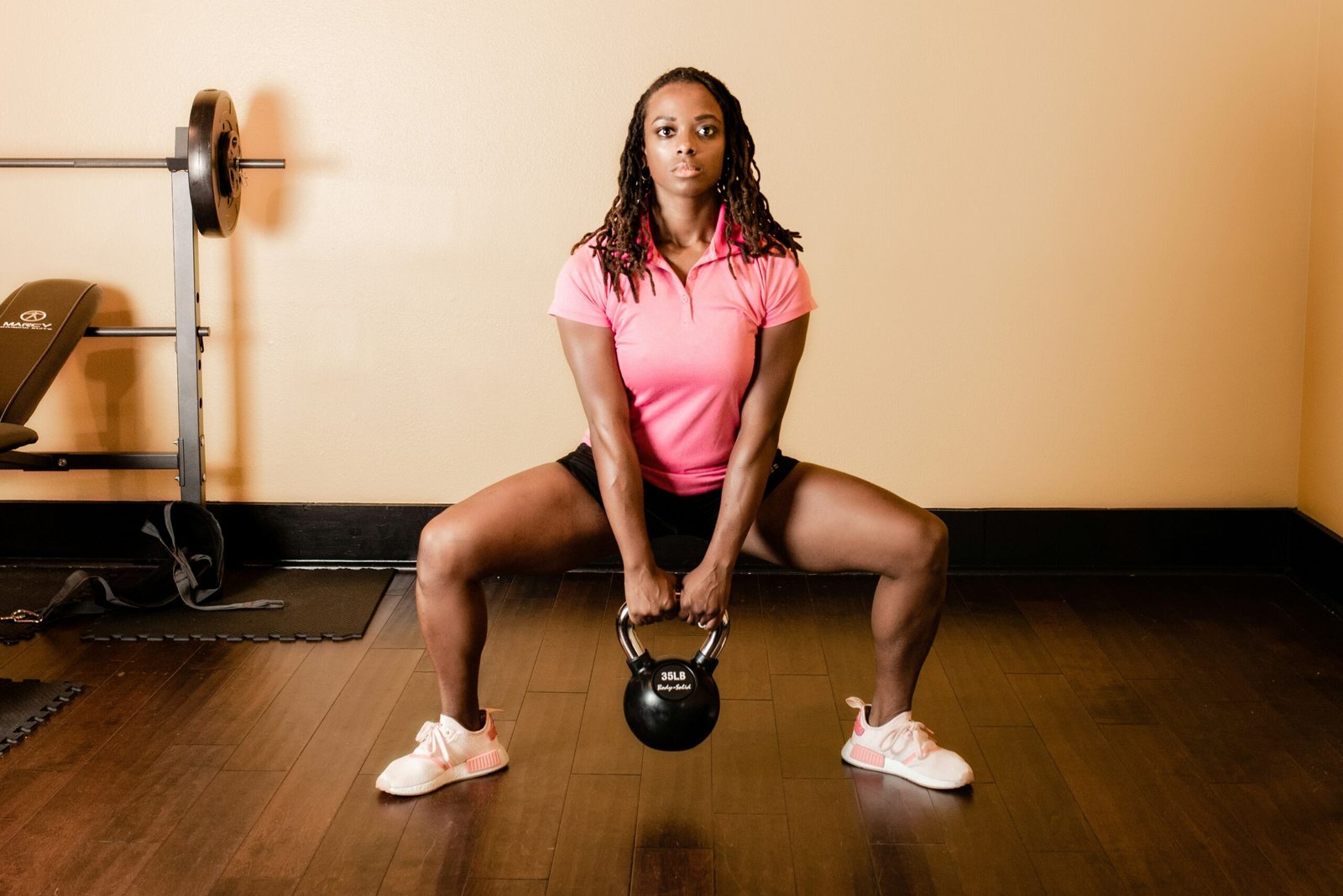Introduction to At-Home Weight Loss
Losing weight can often seem like a daunting challenge, but with the right approach, it can be achieved effectively from the comfort of your home. At-home exercises to lose weight are becoming increasingly popular due to their convenience, cost-effectiveness, and flexibility. No longer bound by gym hours or expensive memberships, these exercises allow you to tailor your fitness routine to your schedule, making it easier to stay committed and consistent.
Embarking on a 4-week journey to lose weight at home requires dedication and a well-rounded plan. The primary objective is to create a calorie deficit by burning more calories than you consume. While exercise is a crucial component, it must be complemented by a balanced diet and proper hydration. Consistency is key, and incorporating a variety of exercises can help keep the routine engaging and effective.
A holistic approach to weight loss involves combining cardiovascular activities, strength training, and flexibility exercises. Cardiovascular workouts, such as high-intensity interval training (HIIT) or brisk walking, boost your heart rate and burn calories. Strength training, on the other hand, builds muscle mass, which in turn increases your metabolic rate, helping you burn more calories even at rest. Flexibility exercises ensure your muscles remain supple and reduce the risk of injury, allowing you to maintain a steady exercise regimen.
Additionally, paying attention to your diet is essential. Consuming nutrient-dense foods that are high in protein and fiber will keep you full longer and provide the energy needed for your workouts. Staying hydrated is equally important, as water plays a vital role in metabolic processes and helps prevent overeating by keeping hunger pangs at bay.
By integrating these elements into your daily routine, you can achieve significant weight loss in just four weeks. The following sections will guide you through ten effective at-home exercises to help you reach your weight loss goals. Remember, the journey is as important as the destination, and maintaining a positive mindset will support your efforts towards a healthier lifestyle.
Jumping Jacks
Jumping jacks are a classic cardiovascular exercise that has stood the test of time due to their effectiveness in burning calories and promoting overall fitness. As a full-body workout, jumping jacks engage multiple muscle groups simultaneously, making them an excellent choice for those looking to lose weight. This exercise not only increases heart rate but also enhances coordination and endurance.
To perform jumping jacks correctly, follow these steps:
1. Stand upright with your feet together and arms resting at your sides.
2. Jump while spreading your legs shoulder-width apart and simultaneously raising your arms above your head.
3. Quickly jump back to the starting position, bringing your feet together and lowering your arms to your sides.
4. Repeat the movement at a steady pace, ensuring you maintain proper form throughout.
For beginners, it is advisable to start with three sets of 15-20 repetitions. As you build stamina and strength, you can gradually increase the number of repetitions and sets. By the end of the first week, aim to complete four sets of 25 repetitions. In the subsequent weeks, continue to add more repetitions or sets as your endurance improves.
To further intensify the workout, consider incorporating variations such as:
– Cross-Jumping Jacks: Instead of simply jumping and spreading your legs, cross them in front of each other during the jump. Alternate the crossing leg with each repetition.
– Power Jacks: Perform a squat each time you lower your arms and return to the starting position. This adds an additional strength component to the exercise.
– Plank Jacks: Begin in a plank position and perform the jumping jack motion with your legs while maintaining the plank. This variation targets the core muscles more intensively.
By incorporating these variations and gradually increasing intensity, jumping jacks can significantly contribute to a weight loss regimen, making them a versatile and effective exercise to include in your four-week plan.
High Knees
High knees are a highly effective exercise to elevate the heart rate and enhance cardiovascular endurance, making them a valuable component in any weight loss regimen. This dynamic movement targets the lower body, particularly the quadriceps, hamstrings, and calves, while also engaging the core muscles for stability and balance. By incorporating high knees into your workout routine, you can significantly boost your overall calorie burn, contributing to weight loss.
To perform high knees correctly, start by standing with your feet hip-width apart. Engage your core and begin by lifting your right knee towards your chest while simultaneously driving your left arm forward. Alternate quickly, bringing your left knee up while your right arm moves forward, mimicking a running motion. Aim to raise your knees to at least hip height with each repetition, maintaining a brisk and rhythmic pace. Ensure that your landings are soft to minimize impact on the joints.
Beginners can start with a lower knee height and a slower pace to get accustomed to the movement. As you build strength and endurance, gradually increase the intensity by lifting your knees higher and accelerating your tempo. For an advanced variation, try incorporating a jump with each high knee or adding resistance by using ankle weights.
To maximize fat burning, consider structuring a weekly progression. Begin with 3 sets of 30 seconds of high knees, followed by 30 seconds of rest. Each week, increase the duration by 10 seconds while maintaining the rest period. By the end of the fourth week, aim for 3 sets of 60 seconds of high-intensity high knees. This progressive overload will help you continue to challenge your cardiovascular system and promote sustained weight loss.
Incorporating high knees into your exercise routine not only enhances cardiovascular fitness but also significantly aids in your weight loss journey. By mastering the correct technique and gradually increasing the intensity, you can ensure effective and sustainable results.
Burpees
Burpees stand out as one of the most effective exercises to lose weight due to their ability to engage multiple muscle groups and boost cardiovascular fitness. This high-intensity full-body workout targets the arms, chest, quads, glutes, hamstrings, and core, making it an excellent choice for those seeking comprehensive physical conditioning. The dynamic nature of burpees not only accelerates calorie burn but also enhances overall endurance and strength.
To perform a burpee correctly, follow these steps:
1. Start in a standing position with your feet shoulder-width apart.
2. Squat down and place your hands on the floor in front of you.
3. Kick your feet back into a plank position, ensuring your body forms a straight line from head to heels.
4. Lower your chest to the ground in a controlled push-up.
5. Push yourself back up to the plank position.
6. Jump your feet forward to your hands, returning to the squat position.
7. Explosively jump into the air, reaching your arms overhead.
8. Land softly and immediately transition into the next rep.
For those new to burpees or looking for modifications, consider the following adjustments:
– Step back into the plank position instead of jumping to reduce impact.
– Eliminate the push-up phase if upper body strength is an issue.
– Replace the jump with a calf raise to minimize joint stress.
To maximize the benefits of burpees, incorporating them into a structured weekly plan is crucial. Start with three sets of 10 burpees, three times per week. Gradually increase the number of burpees by 2-3 reps each week while maintaining proper form. By the end of four weeks, aim to complete three sets of 20-25 burpees, three times per week. This progressive approach will ensure continuous improvement in fitness levels and facilitate weight loss effectively.
Mountain Climbers
Mountain climbers are a dynamic, high-intensity exercise that effectively targets the core, legs, and shoulders while significantly boosting heart rate. This exercise mimics the motion of climbing a mountain, providing a full-body workout that can be performed anywhere, making it a versatile option for those looking to lose weight at home.
To perform mountain climbers correctly, start in a plank position with your hands directly under your shoulders and your body forming a straight line from head to heels. Engage your core to maintain stability. Begin by bringing one knee toward your chest, then quickly switch legs, extending the first leg back to the starting position while bringing the opposite knee forward. Continue this motion at a steady pace, ensuring that your hips remain level and your back stays straight. Avoid bouncing or allowing your hips to sag, as this can lead to strain and diminish the effectiveness of the exercise.
Maintaining proper form is essential for maximizing the benefits of mountain climbers and preventing injury. To ensure you are performing the exercise correctly, focus on controlled, deliberate movements rather than speed. As your strength and endurance improve, you can gradually increase your pace while still prioritizing form.
For those new to mountain climbers, it’s recommended to start with short intervals, such as 20-30 seconds of continuous movement followed by a brief rest period. As you progress, you can extend the duration of each interval and reduce rest times. Here is a simple 4-week plan to help you gradually increase the intensity:
Week 1: Perform 3 sets of 20 seconds of mountain climbers with 10 seconds of rest between sets.
Week 2: Increase to 3 sets of 30 seconds with 10 seconds of rest between sets.
Week 3: Aim for 4 sets of 30 seconds with 10 seconds of rest between sets.
Week 4: Challenge yourself with 4 sets of 40 seconds with 10 seconds of rest between sets.
By following this progression, you can effectively build endurance and strength, making mountain climbers a powerful component of your weight loss journey.
Squat Jumps
Squat jumps are a highly effective exercise for strengthening the lower body and enhancing explosive power. This dynamic movement targets multiple muscle groups, including the quadriceps, hamstrings, glutes, and calves, making it an excellent choice for those looking to lose weight. The combination of strength and cardio benefits in a single movement helps to maximize calorie burn and improve overall fitness levels.
To perform squat jumps with correct form, start by standing with your feet shoulder-width apart. Lower your body into a squat position by bending your knees and pushing your hips back, ensuring that your back remains straight and your chest is up. Once in the squat position, engage your core and explosively jump upwards, reaching as high as possible. As you land, bend your knees slightly to absorb the impact and immediately lower back into the squat position to repeat the movement.
To prevent injury, it is crucial to maintain proper form throughout the exercise. Avoid letting your knees cave inward and ensure that your weight is evenly distributed across your feet. Additionally, land softly to reduce the strain on your joints and lower back.
Beginners can modify squat jumps by performing a half-squat or reducing the height of the jump. Alternatively, they can start with bodyweight squats until they build the necessary strength and stability. Advanced exercisers can increase the intensity by adding weights, such as holding dumbbells or wearing a weighted vest, or by incorporating variations like tuck jumps or single-leg squat jumps.
For a progression plan over four weeks, start with two sets of 10-15 squat jumps, allowing for adequate rest between sets. Gradually increase the number of jumps and sets each week, aiming to complete four sets of 20-25 jumps by the end of the fourth week. This gradual increase will help build endurance and strength while minimizing the risk of injury.
Plank
The plank is an essential exercise for anyone looking to lose weight and build core strength. This isometric move targets the abs, obliques, and lower back, contributing significantly to overall stability and endurance. When performed correctly, the plank helps improve posture, reduce back pain, and enhance balance, making it a fundamental addition to your fitness regime.
To perform a basic plank, start by lying face down on the floor. Position your elbows directly beneath your shoulders and your forearms parallel to each other. Engage your core by pulling your belly button towards your spine, and lift your body off the ground, maintaining a straight line from your head to your heels. Ensure your hips are neither sagging nor piked up, and keep your neck neutral by gazing slightly ahead of you. Hold this position for as long as you can while maintaining proper form.
Common mistakes to avoid include letting your hips drop, which can strain your lower back, and lifting your hips too high, which reduces the effectiveness of the exercise. Additionally, avoid looking up or down, as this can cause neck strain.
To keep the plank exercise challenging, there are several variations you can incorporate. Side planks target the obliques more intensely, while plank jacks add a cardio element. You can also try the forearm-to-full plank transition to enhance upper body strength or the plank with shoulder taps to improve balance and coordination.
A 4-week progression plan can help increase plank duration and complexity. In week one, aim to hold a basic plank for 20-30 seconds. In week two, progress to 40-50 seconds. By week three, try incorporating 10-15 seconds of plank variations such as side planks or shoulder taps. In the final week, challenge yourself to hold the plank for up to 60 seconds and mix in advanced variations.
Lunges
Lunges are a highly effective exercise for strengthening the legs and glutes, while also providing an excellent cardiovascular challenge. By incorporating lunges into your workout routine, you can work on your balance, coordination, and overall lower body strength. This exercise is versatile and can be modified in several ways to continually challenge your muscles and enhance fat loss.
To perform a basic lunge with proper form, follow these steps:
1. Stand tall with your feet hip-width apart, shoulders back, and core engaged.
2. Take a step forward with one leg, lowering your hips until both knees are bent at approximately a 90-degree angle. Ensure that your front knee is directly above your ankle and your back knee is hovering just above the ground.
3. Push through the heel of your front foot to return to the starting position.
4. Repeat on the other side.
Proper alignment and balance are crucial for maximizing the benefits of lunges and preventing injury. Keep your torso upright throughout the movement. Engage your core to maintain stability and focus on a spot ahead of you to help with balance.
For a cardiovascular boost, try incorporating variations such as walking lunges and jumping lunges:
Walking Lunges: Instead of returning to the starting position, step forward with your back leg into the next lunge. Continue alternating legs as you walk forward.
Jumping Lunges: Begin in a lunge position, then explosively jump and switch legs mid-air, landing in a lunge with the opposite leg forward. This high-intensity variation increases your heart rate and challenges your muscles even more.
To progress over the next four weeks, gradually increase the number of repetitions and sets. Start with 2 sets of 10-12 repetitions per leg. Each week, add an additional set or increase the repetitions by 2-3 per leg. By the end of the four weeks, aim to complete 4 sets of 15-20 repetitions per leg for a robust workout.
Conclusion and Tips for Success
Embarking on a journey to lose weight through at-home exercises can be both rewarding and challenging. Each exercise we discussed plays a crucial role in helping you achieve your weight loss goals, from the high-intensity burpees that burn calories quickly to the strength-building squats that tone your muscles. Consistency and proper form are key elements in ensuring that these exercises to lose weight are effective and safe.
Setting realistic goals is imperative. Understand that significant weight loss won’t happen overnight, and it’s essential to be patient with your progress. Track your progress regularly, whether through a fitness app, a journal, or photographs, to stay motivated and see how far you’ve come. Incorporating rest days into your routine is also vital. Your muscles need time to recover, and rest days help prevent burnout and injuries.
Staying motivated can sometimes be the hardest part of a weight loss journey. Find what inspires you, whether it’s a particular fitness influencer, a workout buddy, or a playlist of your favorite songs. Remember, the benefits of a healthy lifestyle extend beyond just losing weight. Improved cardiovascular health, increased energy levels, and enhanced mood are just a few of the positive outcomes you’ll experience.
Ultimately, the exercises to lose weight you choose should be ones you enjoy and can see yourself continuing in the long term. The key to a successful weight loss journey lies in staying consistent, maintaining proper form, and balancing your workout regime with adequate rest and realistic goal setting. Commit to these principles, and you’ll be well on your way to achieving not just your weight loss goals, but a healthier, more active lifestyle overall.











